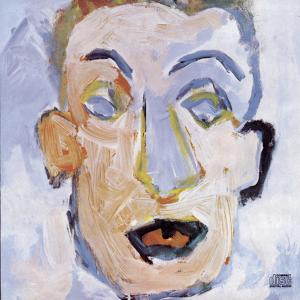
Self Portrait (1970)

1. All The Tired Horses
2. Alberta #1
3. I Forgot More Than You'll Ever Know
4. Days of '49
5. Early Morning Rain
6. In Search of Little Sadie
7. Let it Be Me
8. Little Sadie
9. Woogie Boogie
10.Belle Isle
11.Living the Blues
12.Like a Rolling Stone
13.Copper Kettle
14.Gotta Travel On
15.Blue Moon
16.The Boxer
17.Quinn the Eskimo (The Mighty Quinn)
18.Take Me As I Am
19.Take a Message to Mary
20.It Hurts Me Too
21.Minstrel Boy
22.She Belongs To Me
23.Wigwam
24.Alberta #2
When Self Portrait appeared in 1970, it did more than merely puzzle critics—it infuriated them. At a moment when Bob Dylan was expected to consolidate his mythic status as the poetic voice of a generation, he delivered instead a sprawling, baffling, and defiantly anti-heroic double album. The reaction was swift and brutal. Greil Marcus, writing in Rolling Stone, famously opened his review with the immortal line: “What is this shit?”
In truth, Self Portrait was less an album than a provocation—a wilful dismantling of the sacred edifice that had formed around Dylan throughout the 1960s. Whether this was an act of calculated sabotage or a sincere experiment in musical democratization is still debated. Dylan himself has vacillated in his explanations over the years, alternately calling the project a lark, a deliberate deflation of public expectation, or a misunderstood piece of self-exposure. Regardless of intent, the result remains one of the strangest entries in his discography.
The album opens with All the Tired Horses, a track notable chiefly for the complete absence of Dylan’s voice. A small chorus of female vocalists repeat the same couplet endlessly over a wash of strings: “All the tired horses in the sun / How am I supposed to get any riding done?” As an aesthetic statement, it is bewildering. As an album prelude, it borders on hostile.
What follows is an uneven parade of cover songs, half-hearted reinterpretations of earlier Dylan material, and seemingly tossed-off live recordings, often accompanied by dubious overdubs and ersatz applause. Familiar titles such as Like a Rolling Stone, She Belongs to Me, and The Mighty Quinn appear in forms so diluted and awkwardly presented that they feel like parodies of their former selves. Even the “live” aspect is questionable—many tracks bear the unmistakable signs of studio meddling.
The album’s few moments of coherence, such as a respectable take on Gordon Lightfoot’s Early Morning Rain, are buried deep within its bloated runtime and cannot redeem the whole. The central irony, of course, is that in naming the album Self Portrait, Dylan seemed to promise candor and intimacy. Instead, he offered pastiche and pastiche alone—a mirror not of the artist’s soul, but of his refusal to be contained or canonized.
Critically, the record was a watershed: not a creative low so much as a rejection of coherence, heroism, and continuity. Dylan had always eluded expectations, but never quite like this. For some, the album represents a kind of conceptual prank—a Dadaist rebuttal to idolatry. For others, it is simply a failure.
Whatever the case, Self Portrait remains essential not for its music, but for its gesture. In dismantling his own mythology, Dylan reminded his audience that genius, if it is to mean anything, must include the right to misfire.
Go back to the main page
Go To Next Review